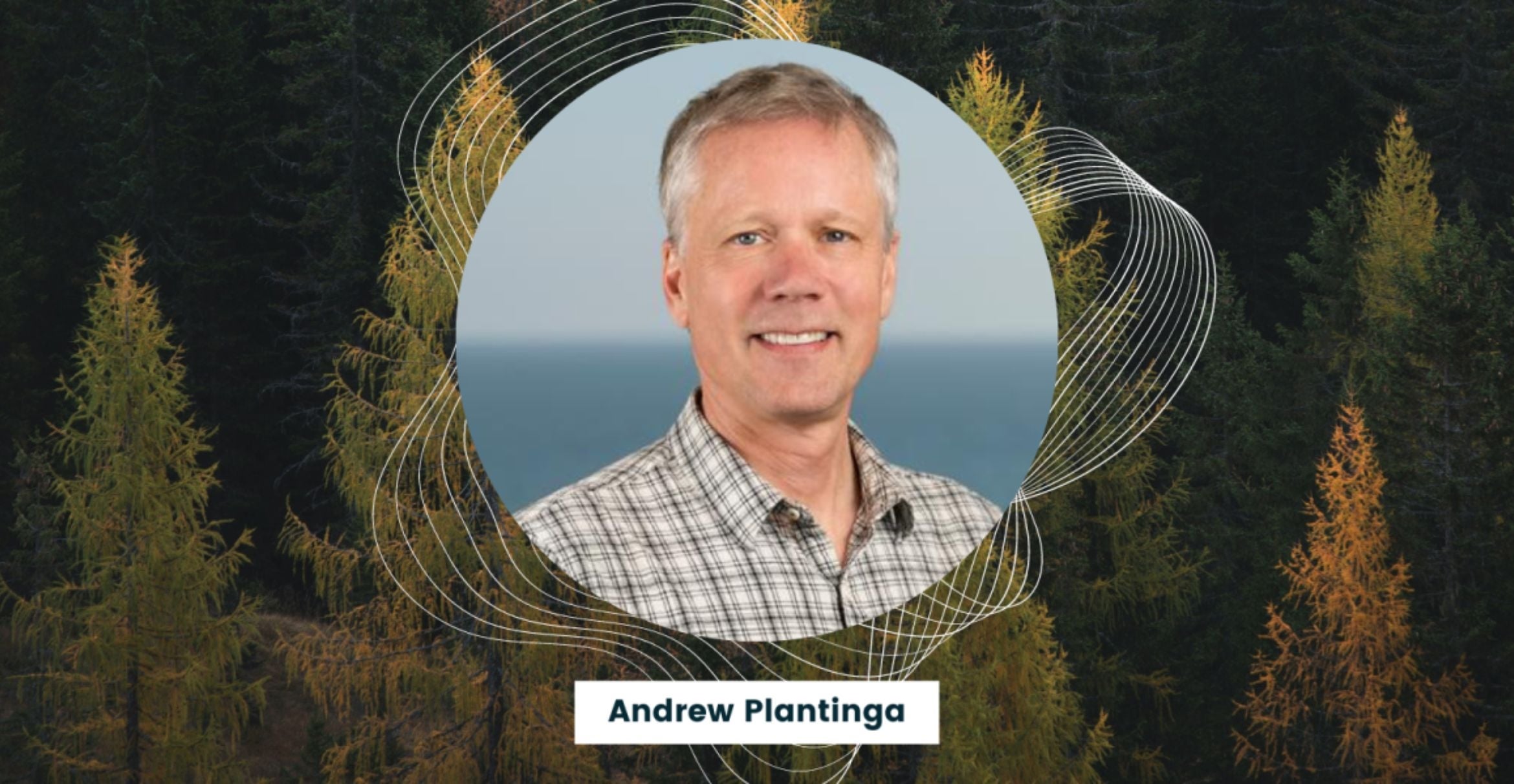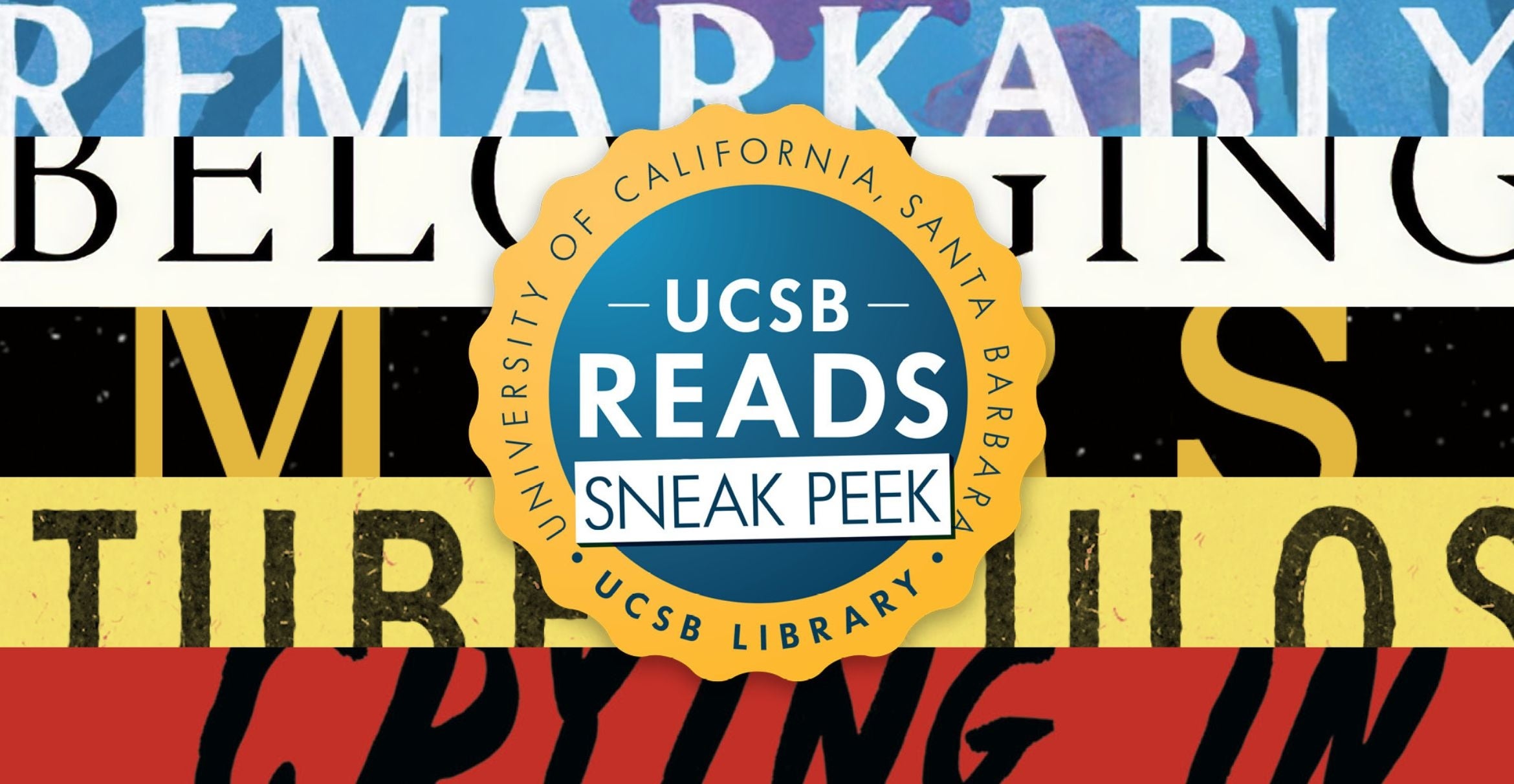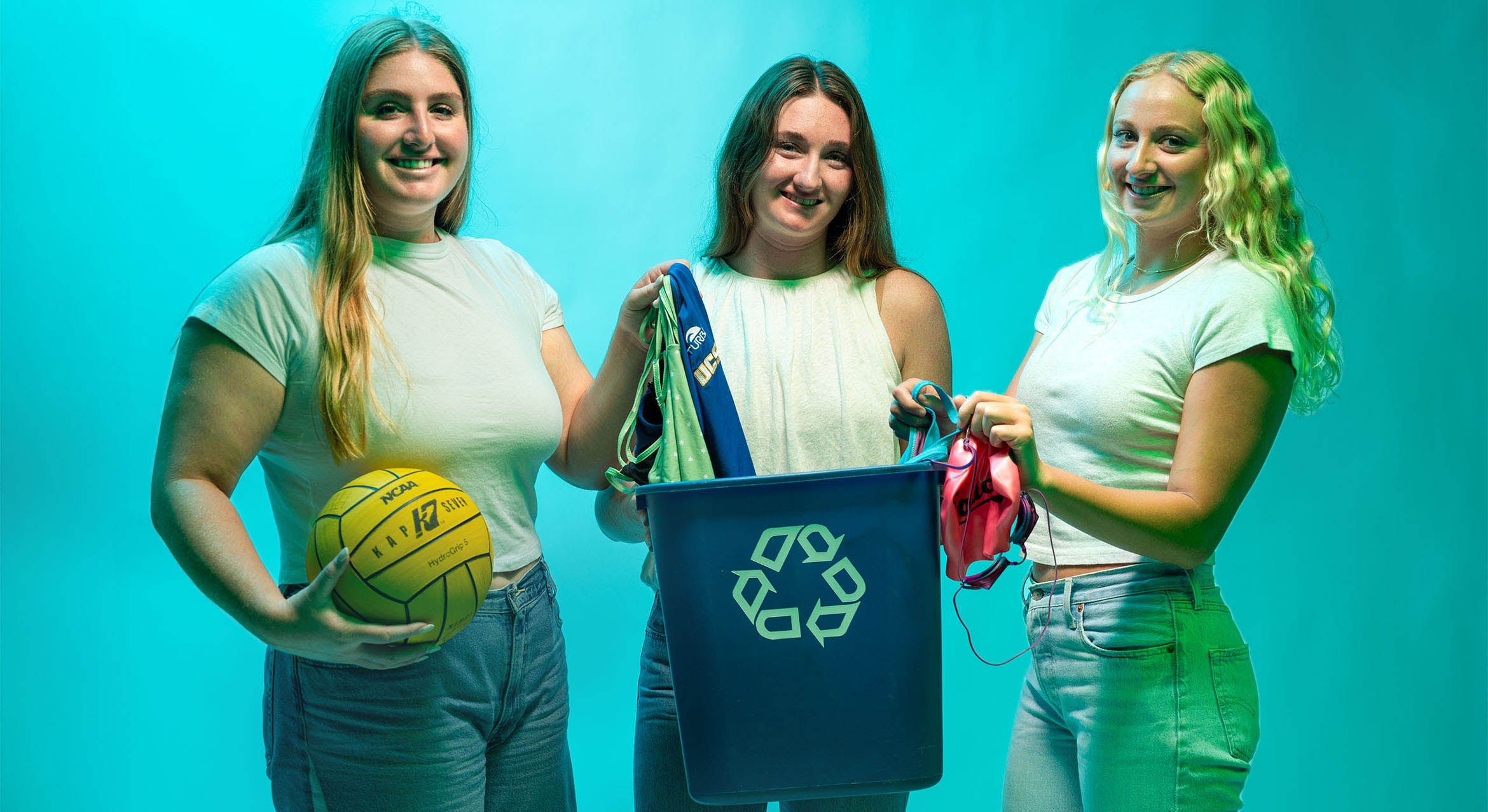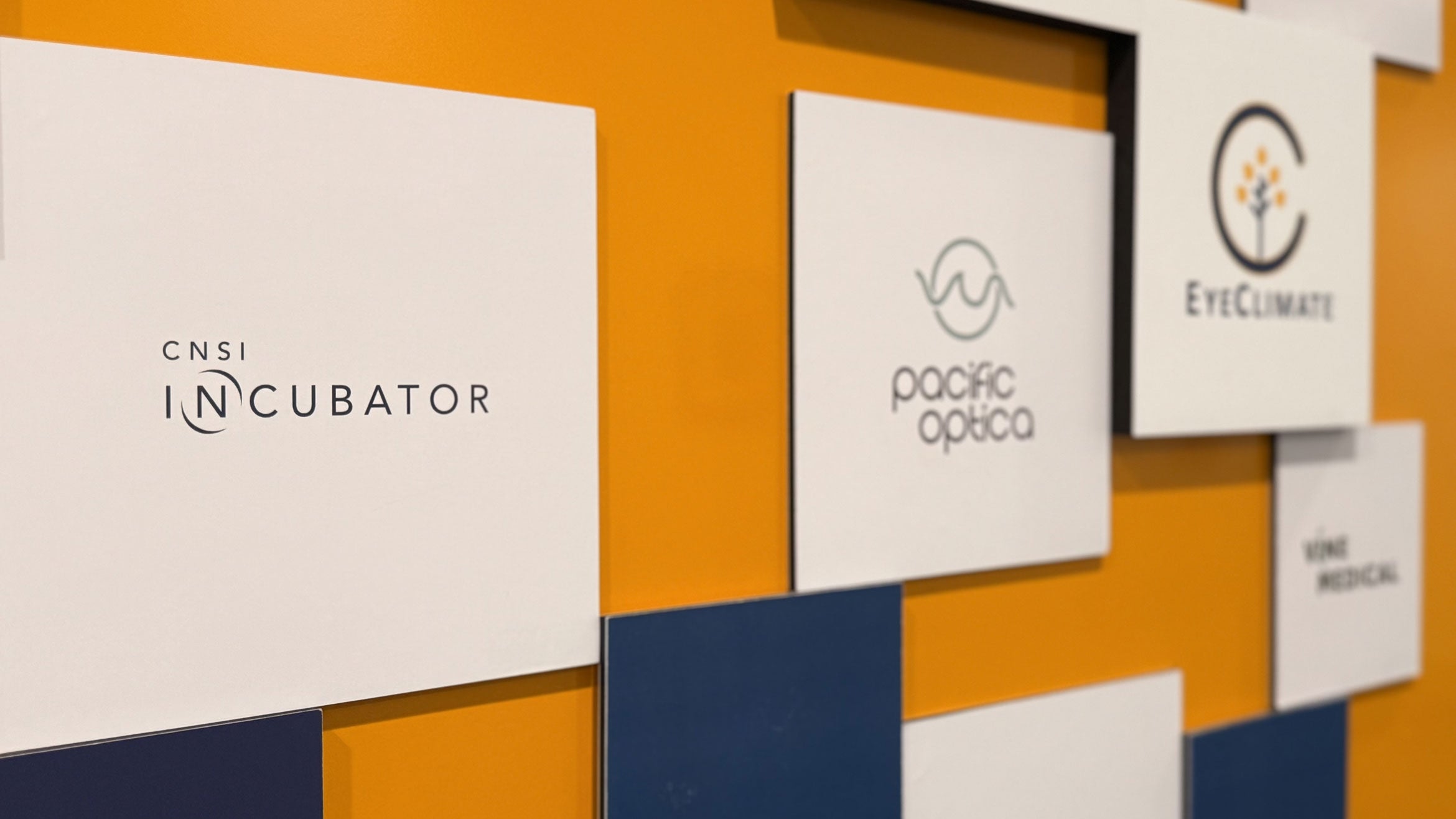High School Students Have a Summer Experience to Remember
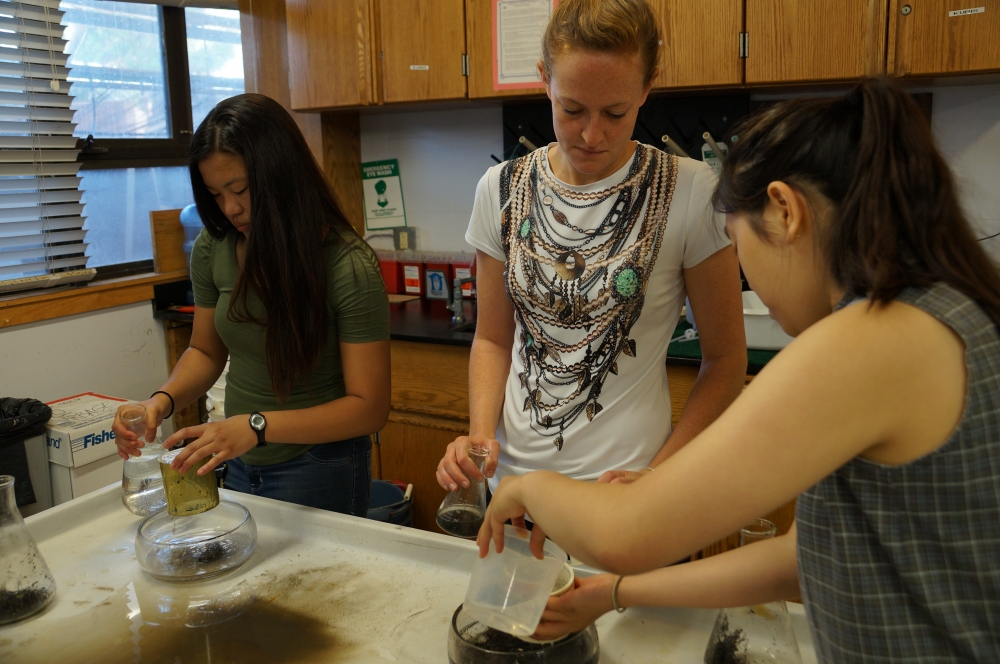
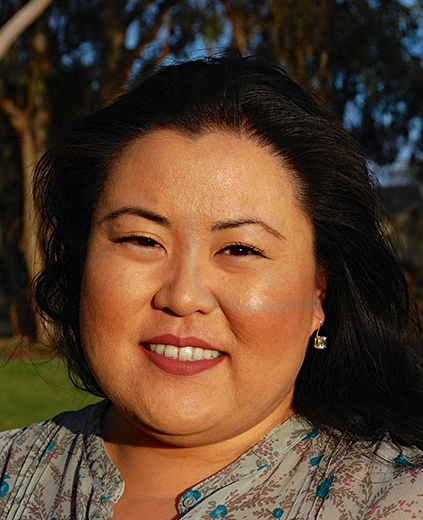
Whether tromping through the mud of the Carpinteria salt marsh collecting algae, wading through the grasses of the Sedgwick Reserve on a scorching hot day in search of black-legged ticks, or fording the surf at Campus Point to find examples of how mussels attach themselves to rocks, students in UC Santa Barbara's Research Mentorship Program (RMP) had the hands-on experience of a lifetime.
For six weeks this summer, the high schoolers participated in active research under the direction of UCSB faculty members, postdoctoral students, and advanced graduate students. The projects covered 18 academic disciplines ranging from Chicano studies and chemical engineering to philosophy and physics.
"I came here expecting to just learn how to do research, but it's been so much more than that," said Sarah Kang, a junior at San Marcos High School in Santa Barbara, who studied variances in algae growth response. Other RMP students had their brains scanned, conducted statistical analyses of fame in Major League Baseball, identified lamination patterns of stromalites, tracked historical changes to childhood gender variance, and demonstrated the repercussions of yellow fever on the South.
From June 24 to August 2, RMP hosted 71 academically accomplished students from around the corner and around the world. They came from as far away as Canada, China, France, India, Paraguay, Thailand, and Turkey to conduct graduate-level research, write research papers, prepare professional posters, and present objective results before an audience of their peers, mentors, friends, and families.
Field trips aren't the only component that make the program, now in its 18th year, a resounding success. Balancing laboratory time with fieldwork, students experience the rigors of academic research and improve their verbal and written communication skills. Along the way, they might even shake hands with a Nobel laureate as they had the opportunity to do following a recent evening program.
"This program is so different from any others that I looked at because the research is very interdisciplinary, which means that we're not only sticking to one field," said Vivian Yang, a junior at Mira Loma High School in Sacramento who researched the effects of climate on vector dynamics and Lyme disease incidence in California. "We're working with different fields and connecting those ties."
"I've been learning how to manage my time and really take charge of my own project since in high school we kind of get things handed to us," added Kang. "But here you become independent and you really are responsible for how much you get out of it, so you initiate things with your mentor.
Mentors, such as Andrew MacDonald, a Ph.D. candidate in UCSB's Department of Ecology, Evolution, and Marine Biology, participate in the program for a variety of reasons. "I chose to be a mentor primarily because I do a lot of teaching of undergraduates and that has been a really rewarding experience for me," he said. "But it's one step removed from actually mentoring students and teaching them about the scientific process and research."
Alexandra Wen, a junior at Plano West High School in Texas, who analyzed the genome size of tiny crustaceans called ostracods, credits her mentor for her positive experience. "It was a wonderful experience, partly because I had a wonderful mentor," she said. "There were so many opportunities. My mentor afforded me such freedom with my project, and it was really an evolving project."
Amazing is the one word that both students and mentors use repeatedly to describe the program. "I think it's an amazing experience," said Jane Wu, a senior at Diamond Bar High School in California, who worked with Phil Lubin, a professor in the Department of Physics and head of the UCSB Experimental Cosmology Group. "It's honestly been the best summer of my life so far," said Wu, who worked on computation simulations of laser-asteroid interactions for planetary defense.
Wu and some of the other students who worked in the Deepspace Lab with Lubin and Ph.D. student John Suen as mentors will continue working remotely in the coming year. "I thought they were very talented and I was very impressed by the skill, the motivation, and the willingness of the students to learn," says Suen.
"To be honest, the students were truly amazing," said Lubin. "I would like to keep them if I could because some of them operate at a very advanced undergraduate level and one or two of them at the graduate level. It was just unbelievable for 16-year-olds, 17-year-olds — truly amazing."
This year's RMP cohort had an average grade point average of 4.34 and had collectively taken 55 university courses and 238 Advanced Placement exams. Virtually all of them participate in extracurricular activities such as arts or sports. Nonetheless, some students found the program challenging on several levels.
"Every student coming in is a big fish in a small pond in their high school," said RMP Director Lina Kim. "When they come to UCSB, they come to this huge ocean where there are a lot of bigger fish. They don't understand that perhaps their best writing at that point isn't the best. They struggle and at some point realize that perhaps they weren't putting in their best effort. But all of them made a switch at some point and turned 180 degrees.
"When they realized that they weren't as good as they thought they were and that we were providing them with tools to become a better researcher, a better writer, and a better presenter, they immediately turned around and showed us their best," added Kim. "They not only surprised us — meaning me, my TAs, and the mentors — I think they surprised themselves at the end of the day."
Kim, who has a Ph.D. in mechanical engineering, and her team of teaching assistants taught the RMP students how to produce graduate-quality research, making it fun as they broke down the process step by step. In her lecture on how to craft a title and develop an abstract, for example, she used movie trailers like "The Odd Life of Timothy Green" and "Star Trek" as her visuals. She also cited the 90-word name of a Fiona Apple album as an illustration of a rambling title, and had the students play communication games to hone their verbal communication skills.
Participants heaped lavish praise on the program, each one saying they'd do it again in a heartbeat. Said Connor Stephenson, a senior at Salem Community High School in Illinois, whose research examined the neural correlates of hypothesis formation and evaluation, "It has prepared me so much and taught me more than I ever imagined."
Local student Ami Thakrar, who worked on stem cell embryogenesis, was one of 10 students conducting research for the California Institute of Regenerative Medicine (CIRM), California's stem cell agency, as part of UCSB's RMP. "I think RMP is great way for high school students to get exposed to research and get exposed to a life in research," said the Dos Pueblos High School junior. "It also helped me better understand what I want to do with my future. And I think it did the same for many of my peers."
Related Links
